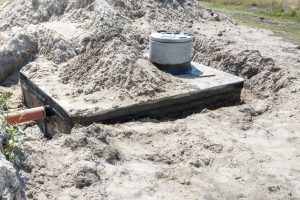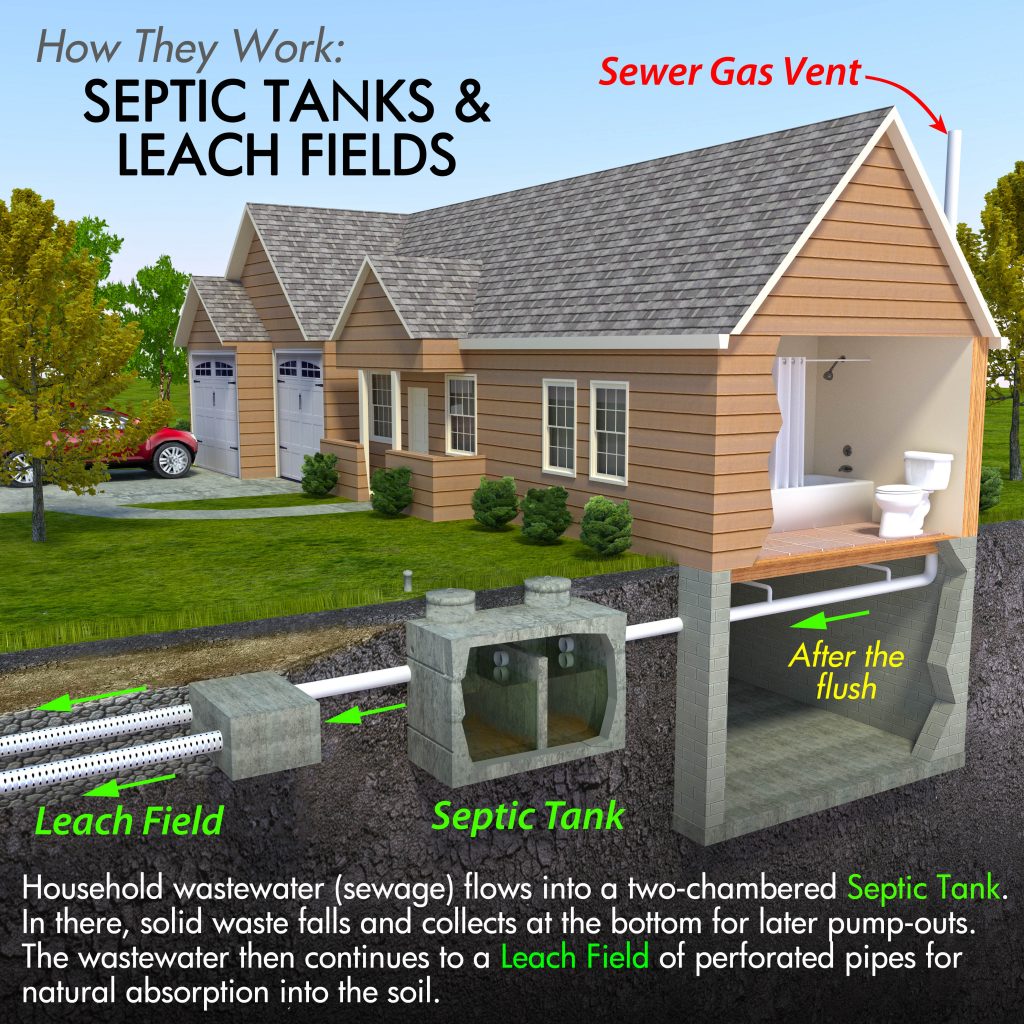
When considering installing your septic system, we need to look at the whole picture to do it right the first time. The best practice is to build an appropriate 1,500-gallon net-volume septic tank with two compartments. Even if you are allowed to install a smaller tank, you will save money in the long run by getting the septic tank drained less often and a much smaller chance of potential bio-mat forming in the leaching area. Larger tanks retain effluent for a longer period of time, allowing solids to settle on the bottom and to float to the top. Besides, a bigger tank would allow rooms to be added later without the county having a larger septic tank.
Each county has its own unique regulations with equations and definitions that can change on an annual basis and are always open to interpretation. Slower percolation rates due to poorly draining soil with clay, bedrock, high groundwater, proximity to a creek, or other complications require larger leaching fields. There are two ways of measuring the total absorption region for the field of leaching.
Traditionally, in the area of the intended leach field, you dig an 8-foot deep test hole to allow the building inspector or your local engineer to physically examine the soil and determine its Long Term Acceptance Rate. You can have a local soil testing firm perform a percolation test to keep track of your soil’s ability to absorb liquids. Local building code dictates the equation used to calculate how many square feet of the leach field is required based on the speed of percolation, soil composition, and LTAR. It is recommended for reading in order to understand the basics of septic systems. The general rule of thumb to be used when estimating is one square foot of leach field per gallon of effluent per day in normal soils that are relatively well percolated.
Save your money by renting a backhoe and installing your own plastic septic tank for your home sewage system. If the local code dictates the installation of a concrete septic tank, have it well sealed and try to avoid rectangular vaults. The rounded end, the shape of the hockey rink, is much stronger. By comparison to concrete, plastic tanks are not affected by high groundwater and contaminated soils, which ultimately weaken concrete and require replacement.

Plastic has many advantages over concrete in addition to durability in wet locations: consistent quality, transportability without a crane truck, and three-way inlet and outlet ports. Polyethylene tanks will never crack and leak and can be easily moved by two people, saving money on heavy equipment and making it easier to build difficult locations. In most nations, local authorities require residents to request a site plan and receive their own construction permits.
Save your money by hiring a backhoe and building your own septic system! Stamped, engineered, septic system plans are usually not necessary unless your property percolation test was extreme (more than 60 minutes per inch or less than 5 minutes per inch), or if the site has seasonal groundwater; or if the soil is less than four feet below the proposed leaching field, or if the soil slope is more than 30 percent within the proposed leaching area.
Engineered structures require the approval (stamp) of the septic tank and leach field designs by the local professional engineer. Anyone can draw up their own septic system plan, but legal responsibility then rests exclusively with your regulators, and they often defer to a licensed and insured local engineer. This releases the local government from future legal liability for the failure of your extreme septic system.